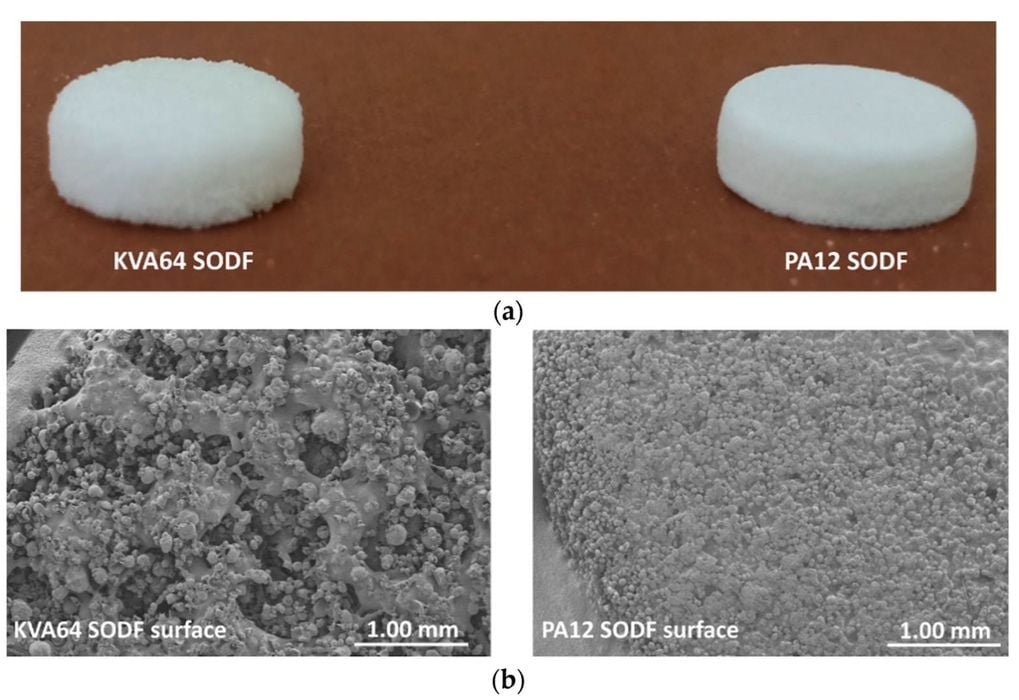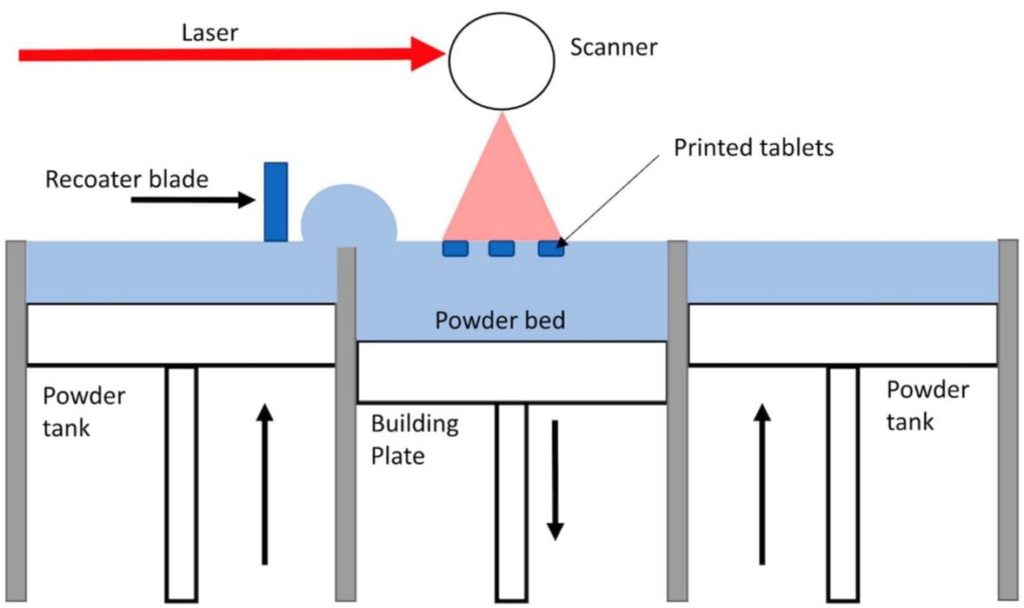
3D printed pills are under development, but could this be done with SLS technology?
SLS, or selective laser sintering, is a well-known and very mature 3D printing process that uses fine powder. Flat layers of powder are selectively fused together using moving laser beams, and those layers gradually build up into a full, 3D object.
The SLS process is most typically used to produce nylon objects, often suitable for end use. Because of 3D printing’s unique ability to make products without re-tooling, SLS is frequently used to make customized production products for consumers.
3D printed pills are a fascinating concept that has yet to significantly take off. The idea is straightforward: by leveraging the ability of some materials to dissolve slowly, it’s possible to design 3D pills that can meter out precise dosages on a timed schedule.
It’s a process similar to making a complex fireworks payload, without the explosion. We wrote on another effort to produce 3D pills last week.
But could these complex 3D pill structures be made with the SLS process?
Could SLS, a process typically used for polymer materials, be used for 3D pill making?

That’s where researchers from the Université de Montpellier began their work. As this has never been attempted previously, their work focused on the sinterability of relevant powders. For their project, they used copovidone and paracetamol and attempted to 3D print them info solid oral dosage forms.
Their investigation looked at whether the materials required an additive to increase laser energy absorption, and this turned out to be not the case for one of them. They investigated the hardness of the resulting pills, as well as their solubility and other factors.
For their investigation, they used Sharebot’s compact SLS 3D printer, the Snow White. Somehow this seems very appropriate.
In the end it seems they’ve constructed a kind of “baseline” of expectations for this type of application with SLS. For example, one of their findings is this:
“Low compactness of powder is associated with a decrease in thermal absorptivity, which results in a poor densification of the printed part and an increase of porosity.”
Their research by no means indicates one could practically 3D print pills on an SLS device. Instead, they’ve shown that it is theoretically possible and have identified many of the constraints and issues.
There’s another point to make: standard SLS 3D printing devices use only one material at a time. Thus it is impossible to make the complex “programmed” 3D pills mentioned above using SLS. Instead it is possible to make mono-material 3D printed pills.
Why do this when existing technologies are fully capable of producing mono-material pills? There is the possibility of designing “shells” for these 3D printed SLS pills of varying sizes. This could potentially control or at least influence the solubility rate of the pill. That could be of interest for some drug applications.
What the researchers have really done here is open the door for someone to develop a dedicated pill-making SLS 3D printer. They’ve shown it’s possible, and laid out many of the engineering challenges a commercialized product would have to account for in its design.
Would these 3D printed mono-material pills be more economical to produce than conventional pills? That’s a question that remains to be answered.
Via NIH
